Can I get a glucose infusion for diabetes?
Although most people don't "yell at the doctor", it's a common question asked by many patients.
Let's imagine that a diabetic, doesn't he have elevated blood sugar, so if you put in glucose at this time, will your blood sugar be higher?
There is nothing wrong with this logic, but in the clinical setting, glucose not only can be infused, but sometimes must be.
Why can I get a glucose infusion?
Most of the time, many nurses will call the infusion "white fluid", that is to say, it does not contain antibiotics, does not contain much nutrition, does not contain the inhibition of gastric acid, antiemetic, analgesic, anesthesia, it is simply to provide the patient with water, electrolytes used.
That is, a person always needs to be kept alive when they don't eat or drink anything in a day (e.g. waiting for surgery, just had a GI bleed doctor ordered fasting, etc.), so since they can't eat, they water our tissues through an infusion of fluids that bypasses the intestines and goes directly into our blood vessels.
One can go a week without nutritional fluids, but not a day without water, so fluids are a must for patients who cannot eat.
There are two main types of this "white fluid", one is ordinary sodium chloride, or saline, which has virtually no effect or side-effects, just providing water.
The other is glucose, or a mixture of glucose and saline, which serves to provide more than just water, but also a little bit of energy.

Then when glucose is fed, the patient's blood sugar must rise, but a normal person can quickly bring it down to normal through insulin without serious problems. However, in diabetic patients, insulin secretion is relatively insufficient, and blood sugar will rise.
But when doctors give glucose to diabetics, they usually do so in a certain ratio, such as a 3:1 or 4:1 sugar:insulin ratio, along with a certain amount of insulin.
For example, a bottle of 5% dextrose 500 ml contains 500 * 5% = 25 (g) of sugar, so usually 25 ÷ 4 = 6, or 6 units of insulin, will be added to the diabetic's dextrose. This is a mixed infusion at this time, and usually the blood sugar will not fluctuate much.
So it is also very reasonable and safe for diabetics to enter glucose without too much worry~
There is a particularly common misconception when it comes to diabetes. A diabetic patient is actually a patient who is not able to give good feedback about the sugar that enters the body, thus keeping the blood sugar in a higher-than-normal state. For example, when a normal person ingests sugar, the body uses several pathways, one of the main ones being insulin secretion to break down the sugar. In diabetic patients, due to insufficient insulin secretion or insufficient insulin effectiveness, there is no way to completely break down the sugar, so the sugar exists in the blood, causing high blood sugar.
Therefore, there are times when diabetic patients suffer from hypoglycemia! It is the need for sugar supplementation.
On the other hand, medications rely on being dissolved in water in order to enter a person's body through an IV. The water commonly used to dissolve medications is either glucose water (called sugar water by healthcare professionals) or sodium chloride water (saline).
Some medicines can be dissolved in sugar water as well as in salt water, and some can only be dissolved in salt water. And there are drugs that can only be dissolved in sugar water, in which case only sugar water can be used.
Also, there are times when patients who are hypernatremic should not use saline at this time because of the sodium content.
Of course, when giving glucose solutions to diabetics, doctors usually add insulin inside the medicine to prevent the patient's blood sugar from rising.
That's why when you're hospitalized, your doctor will ask if you have diabetes when taking your medical history
Regarding this issue, sometimes doctors are really helpless, I remember when I first worked, but also with the patient or family theory, facts and reasoning, but a long time, and all the doctors did the same pants off farting the same thing. That is, while using glucose rehydration solution with medication, but also under the doctor's orders to accelerate the effect of insulin, for what is not a blood sugar stabilization, in order to figure a clean 。。。。。。
What we do when we add insulin to glucose rehydration solution is not that it is necessary or makes sense to do so, it is purely just to avoid suspicion.
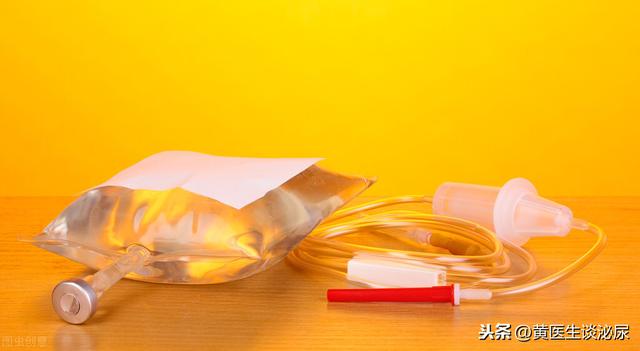
Here, Dr. Wong will tell you whether glucose injection can be given to diabetics or not.
(i) Why glucose injection is used in the treatment process
First of all, the solvents for all drugs, commonly known as dextrose injection, sodium chloride injection and dextrose sodium chloride injection.
Why is pure water not used in most cases? The main thing to consider is aosmotic pressureThe problem with this, as you should have learned in middle school biology class, is that cells have a high osmotic pressure and water has a low osmotic pressure, and when you put cells in pure water, the cells will disintegrate as soon as they go in. The human body is the same, you infused into the fluid, at least the osmotic pressure should be about the same as the body's cells to work. And the most abundant and least allergic possible in human blood, that's theGlucose and sodium chlorideNaturally, these two become natural "additives" to the rehydration solution, in order to adjust the rehydration solution "thicker".
Secondly, why must we sometimes use dextrose injection? The main problem is still the solubility of the drug, some drugs on the instructions clearly stated that the drug with glucose injection for compounding, not blindly, these drugs in sodium chloride injection is not fully dissolved, a bag of suspension, change you dare to infuse it? Dr. Huang once also privately test, take some of these drugs to sodium chloride injection add try, the results of how to shake how to heat are not fully dissolved, indicating that other people's drug instructions are also objective.
There is also a situation where glucose is needed, and that is when a patient is postoperativelyfastDuring this period, even diabetics need glucose as a source of energy, and glucose supplementation for proper energy is a must! What happens if a diabetic patient is not given glucose supplements during fasting? That is, the patient's body fat begins to break down a lot, the blood is filled with ketone bodies, and even induce ketoacidosis.
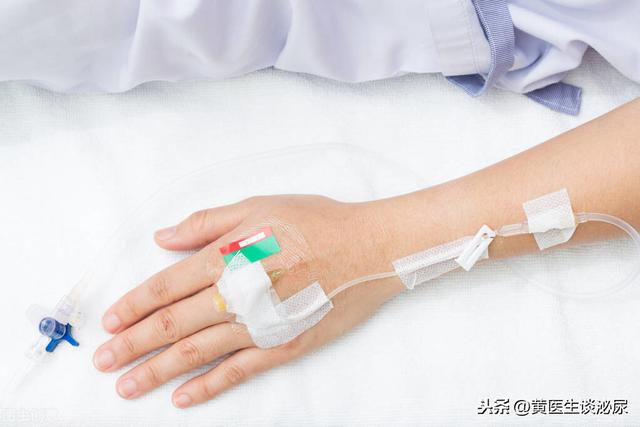
(ii) Safety of dextrose injection for diabetic patients
Then again, what effect do glucose injections really have on diabetics, and here's a mathematical data set to make sense of it.
A 500 ml bag of 5% dextrose injection contains 25 grams of sugar.
Generally speaking for normal cooking, 83 grams of cooked rice contains 25 grams of sugar, how much is 83 grams, about 1.5 taels of rice I think, how much is a bowl of rice in your home bowl?
How many meals do you say you eat at least three times a day if you're on a diet? The rehydration fluid is still put in drop by drop, the process is long with a buffer, but the meal is eaten in a few minutes.
A lot of diabetics are just, you can take a big bite out of your meal, and having glucose in your rehydration fluids is just too much to worry about!
In addition, the rehydration process is a slow one, and there is no sudden increase in blood sugar.

(iii) Does brief glucose intake have a significant effect on the body of a diabetic?
As we all know, diabetes is a chronic disease-causing and disabling process, and the whole process lasts for more than five to ten years. Only when human organs receive blood containing high sugar content for a long time, and under the stimulation of long years, will multi-system and multi-organ complications be formed.
So, the question arises, if a person keeps their blood sugar stable for a long period of time and occasionally eats a few extra bites of food, will it have a significant long term effect on their body? The normal logical thought is that the answer is no, right?
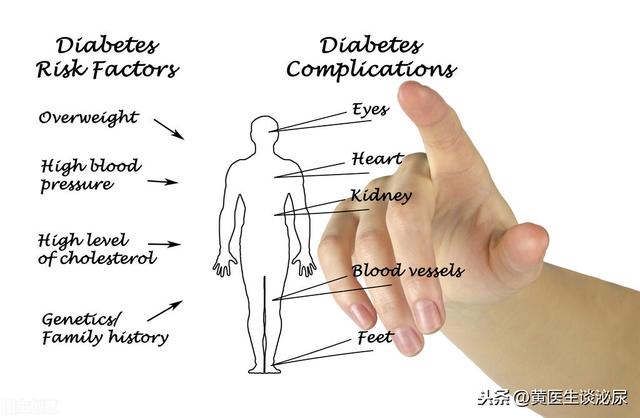
(d) When rehydrating fluids, can adding fast-acting insulin to the rehydration solution lower sugar quickly?
In general, the principle of rehydration of glucose injection is 1 unit of insulin for every 5-10 grams of glucose, and patients who often take insulin can think about this 3-5 units of insulin is very big. You know, we sometimes prescribe down, the nurse does not know how to add so little insulin.
Moreover, if you are an obese patient with very low insulin sensitivity yourself, these few units of insulin are almost better than nothing.
Of course, for the type of diabetic who is thin and is sensitive to insulin, this is a condition that requires the addition of insulin.
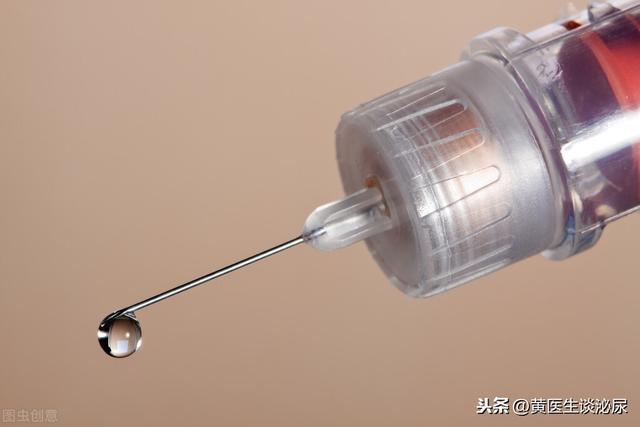
(v) Whether the practice of dispensing glucose injection with insulin is reasonable or not
- This practice is a Chinese original in response to domestic public opinion, and no one in foreign counterparts has done so, so that no one in the world will discuss whether it is reasonable or not to add insulin to glucose solution.
- This actually poses a clinical risk, and in patients who happen to have just self-administered insulin or oral insulin prior to rehydration, as well as in patients with low blood glucose, this behavior poses a risk of causing hypoglycemia.
- Insulin is a protein hormone, and as changes in PH and osmolality lead to protein denaturation during rehydration with different medications, the nature of insulin itself may change, with unpredictable consequences.
- Insulin promotes the extracellular inward flow of potassium ions, and when treating patients with malignant vomiting, the addition of insulin to the rehydration solution may lead to a risk of exacerbating hypokalemia.
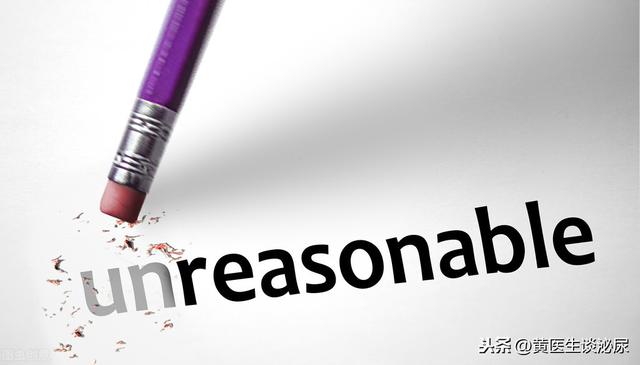
concluding remarks
In summary, in this country, the main point of adding insulin to glucose injections to prevent hyperglycemia is just to comfort the patient, and the risk of adverse effects already outweighs the possible benefits, and this practice is many times not clinically valuable.
To say a thousand words, in order to avoid unprovoked disputes, doctors can only keep doing so, often a not so right thing to do for a long time, even the doctors themselves really feel that it is right to do so 。。。。。。
If anyone is confused about anything, feel free to leave a comment below.
I am Dr. Huang, adhere to the use of plain language to tell their own clinical understanding, if you agree with my point of view, please help to point a concern or click a like it, if you or your family and friends, need to know about the relevant knowledge, please forward this article to the people who need it, thank you!
Hello, I am an anorectal doctor, in fact, to diabetic patients injected with glucose injection this "stupid thing" Dr. Lin also did, and still "knowingly", but before opening the medical prescription and the patient and his family communicated, but also expressed understanding. Why family members know to diabetic patients injected sugar why not scold Dr. Lin? Diabetic patients can inject glucose? Listen to what Dr. Lin said below:

In fact, giving glucose to diabetic patients, Dr. Lin has done it a few times, the first time was when he was in the entry rotation of the department, it was his turn in the endocrine department, that day the emergency room brought in a"Diabetic Ketoacidosis"Patients, this disease is a long-term high blood glucose to the burst table after the complications caused by the common manifestation is that will faint, this patient is, admission blood glucose with glucose meter directly high to the inability to measure, and then check the blood ketone body 5mmol / L, and then immediately a large number of rehydration solution to dilute blood glucose and blood ketones, and then injected with insulin to lower glucose, the treatment of the past few days the patient is also tired, the nurses are also tired, because it is necessary to hang 24 hours a day to hang the salt water The patient was tired and the nurses were tired, because they had to hang saline 24 hours a day and measure blood glucose basically once every 2 hours. Until the blood ketones drop to normal value, because blood sugar is easy to drop, usually after 1/2 day of treatment blood sugar in the normal value but blood ketones are still high, the patient is tired.At this time still need to inject insulin and saline ketamine, and during the treatment is also fasting state body also need glucose supply calories, but if you have been insulin hypoglycemia, but also hypoglycemia,So there's no way.We can only use glucose sodium chloride water with insulin,It just so happens that the insulin and glucose in it can interact with each other not to raise blood sugar, but only to supply energy.

So through this case we can learn that even if you are a diabetic and still have severe complications you can still have glucose infusion because it is needed for your condition, theContrary to what we know to be common sense, there is actually a situation where theIf you are a diabetic who also uses glucose, it is a drug that is dosed together can only be dosed using sugar water, it is commonly used in our chemotherapy drugs: oxaliplatin.Dr. Lin last month a rectal cancer and diabetic patients to fight chemotherapy, also used glucose with oxaliplatin but at the same time will add another 4 units of insulin into the.There is actually a strict dosage for this dosing, with 1 unit of insulin typically lowering glucose by 4 grams.A 250 ml of 5% dextrose, containing 12.5 grams of glucose, requires 3-4 units of insulin to be neutralized and also the blood glucose is measured again during chemotherapy to prevent hypoglycemia.
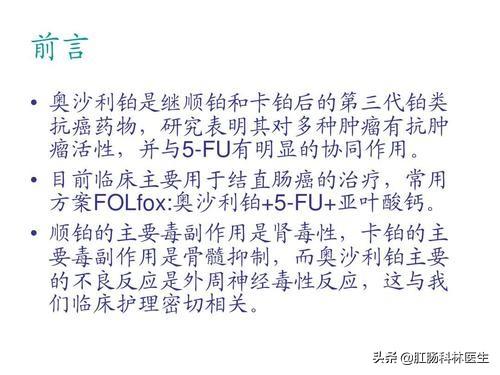
There are actually many other conditions that also require glucose infusion in diabetics:
Low blood sugar, for example.This is the most likely symptom of many diabetic patients, because many patients are afraid to eat, a meal more blood glucose is high, and even some simply do not eat, but still orally take the original dose of hypoglycemic drugs, it is easy to induce hypoglycemia, if the hypoglycemia is induced in the night is more dangerous, the light is onlyhungerSometimes it's just a matter ofperspireslightlyPalpitations, relieved by rest.In severe cases, there is impaired consciousness, babbling, and evenComa appears life-threatening! So when this happens the first thing we doctors do is give an infusion of glucose, and a high concentration of glucose at that.

And then there's rectal cancer and diabetesAfter bowel cancer surgery, we will make them fast for a period of time, during which they can only be provided with one day's energy through infusion, as glucose is the basic substance supplied by our body, so glucose must be infused. However, during the infusion we will also closely test the blood sugar to prevent it from rising and also to avoid hypoglycemia. At the same time, we will also let the family prepare a chocolate, because there is still hunger after fasting all the time, if the patient is so hungry that he/she appears to be panicky, dizziness and fatigue, he/she can immediately let the patient take half a piece of chocolate with his/her mouth, so as to prevent the aggravation of hypoglycemia. Some gastrointestinal polyps after surgery we will also let them prepare chocolate, after all, fasting for 1/2 day will indeed be hungry and panic.
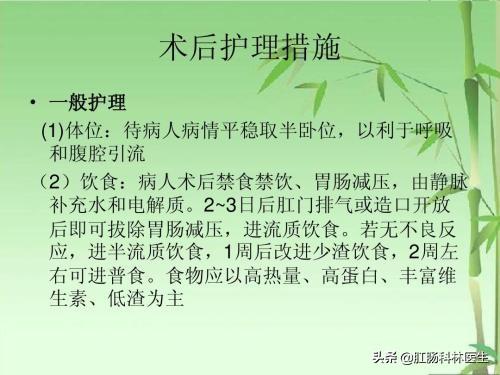
Summary: the original diabetic patients can lose glucose, and some cases must be lost, the man who opened the question roar doctor, just the wrong way, after all, our common sense in diabetic patients is to have less access to sugar, this event in fact, the doctor has a large part of the responsibility, because there is no and the family informed of the condition and the purpose of the infusion, leading to the patient to misunderstand the doctor. In fact, many doctor-patient relationships are still caused by inadequate communication. In this regard, Dr. Lin also needs to be strengthened.
Follow Dr. Lin, learn more and more health tips, let me be your exclusive little sun~~~
Give me another like.
By chance, I had previously watched a dramatic segment on TV where two patients were asleep and their families were tending to them.
One of the sharp-eyed family members found that the other side of the bottle of medicine written on the "glucose", asked "your partner is not diabetic, how to transfuse glucose, is not the nurse mistaken?"
At this point the family was anxious, immediately want to stop their own infusion, the nurse rushed to stop and was scolded. After the doctor came to explain, the families realized that they did not understand.
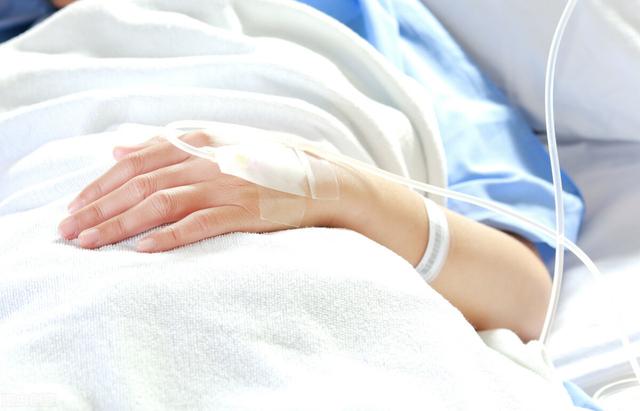
Such situations, in fact, occur in hospitals and outpatient clinics because of the lack of medical knowledge on the part of patients and their families.On the one hand, it is necessary for the health care personnel to be able to explain in advance when the situation permits; on the other hand, it is necessary for the sugar addicts to learn about it in general.
We know that the cause of diabetes is not so much related to glucose intake or eating too much sugar, but mostly due to insufficient insulin secretion or insulin resistance.
Under what circumstances in the hospital, will glucose be given to a glucose patient?
-Certain diabetics also still need to utilize glucose for calories during fasting (not eating or drinking) after hospitalization;
-Some diabetic patients combined with hypertension, kidney disease, heart disease during the period, it is not appropriate to enter a large number of saline, otherwise it will aggravate the condition, so only rely on glucose to do solvent.
besidesThe doctor will choose the appropriate amount of glucose to be administered based on the patient's blood glucose during the hospitalization, and will administer a certain amount of insulin during glucose administration to prevent the blood glucose from rising.So, sugar lovers don't have to worry too much when they need to enter glucose.
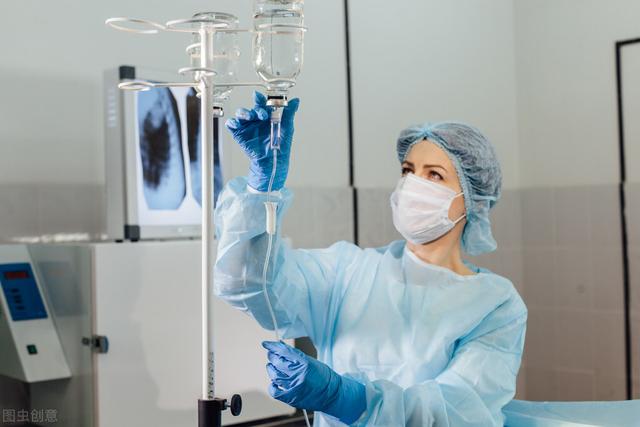
Finally, good health!
If you have any questions about health management or diabetes, please feel free to write to us or share your questions in the comments section.
--END--
Editor-in-chief|Jin Xiaoxiao
谢邀.
It is not possible to generalize about whether glucose can be infused in diabetic patients.
It's also wrong for men to yell at doctors without asking questions.
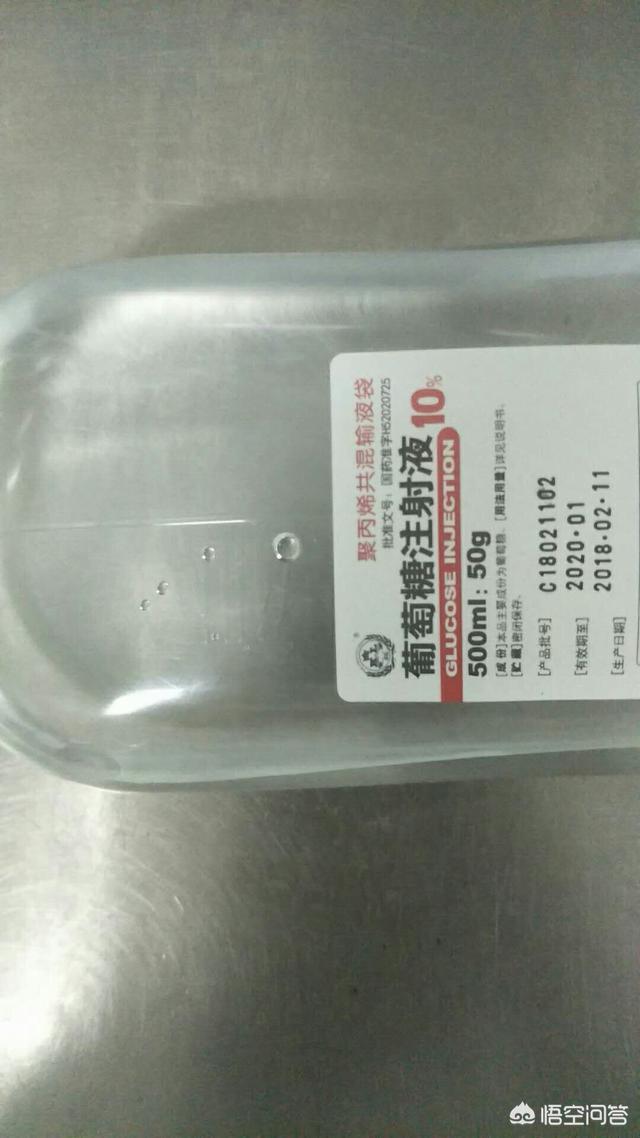
Why, read on.
Glucose provides 50% to 70% of the energy needed by the body. In addition to providing energy, glucose is also an important carbon source for the body and is involved in the composition of glycoproteins.
In diabetics, blood sugar rises because the body does not produce enough insulin.
Clinically, most diabetic patients do not need glucose infusions, but these are the following conditions that do
1, there is a part of anti-inflammatory drugs or a part of the intravenous use of drugs, need to be dissolved and diluted with dextrose injection intravenous drip, at this time you can add the appropriate proportion of insulin, generally does not lead to a sharp rise in blood glucose.
2, diabetic ketoacidosis or hypertonic non-ketotic diabetic coma, in the resuscitation, when the patient's blood glucose will be up to 13.9mmol / L, is to be given 5% dextrose or 5% dextrose saline, if coma can not eat or tracheal intubation of the patient, who can not eat, it is necessary to give 5% dextrose and glucose 10 injections and add insulin is used to give the body to provide energy.

3, in the encounter of hypernatremia (especially central hypernatremia), heart failure, edema disease patients combined with diabetes mellitus, in order to avoid aggravation of the above conditions, is to consider the use of glucose + insulin, if necessary, combined use of diuretics.
4, severe patients can not be oral feeding or nasal feeding patients, in the case of blood glucose is not too high, it is necessary to intravenous glucose to provide energy, but to add the appropriate proportion of insulin, and dynamic monitoring of blood glucose.
In short, diabetic patients can not use glucose is too arbitrary, glucose injection for diabetic patients is not a beast, as long as the condition requires, glucose added to the appropriate amount of insulin with the use of(in general: 1 unit of insulin: 4 grams of glucose) and the correct treatment of the disease, which should not be considered as medical malpractice and blamed on the physician, in shortAs long as the disease is diagnosed correctly before use, grasp the amount of glucose injection and the proportion of insulin dosing, pay attention to dynamic monitoring of blood glucose changes in use, according to the blood glucose level of timely adjustment of the treatment program, diabetic patients are completely safe to use glucose injection.
It is often heard in clinical practice that
"Dr. Sun, I have high blood sugar, why do you doctors still give me glucose?"
"I can't get my blood sugar down all the time, and that's why your doctors are giving me glucose infusions!"
Is this true for real drops? Are diabetics just not allowed to use glucose liquids?

Actually, no!
When diabetics need infusion therapy, many times they need glucose solution. Diabetics should not treat glucose as a flood monster; glucose is not only life-saving, but it is also a direct energy supplier for the body.
Glucose is the most effective drug for hypoglycemia treatment
Diabetes can manifest itself in more than just high blood sugar; in the early stages of diabetes and during the treatment of diabetes, patients often experience hypoglycemia, or hypoglycemia may be a condition that diabetics are not immune to experiencing.
Mild hypoglycemia will be relieved quickly by taking sugary foods by mouth, but for the elderly, severe hypoglycemia, and young children who develop hypoglycemia, the most effective corrective medication is glucose. It can be taken orally, or given intravenously or intravenously.
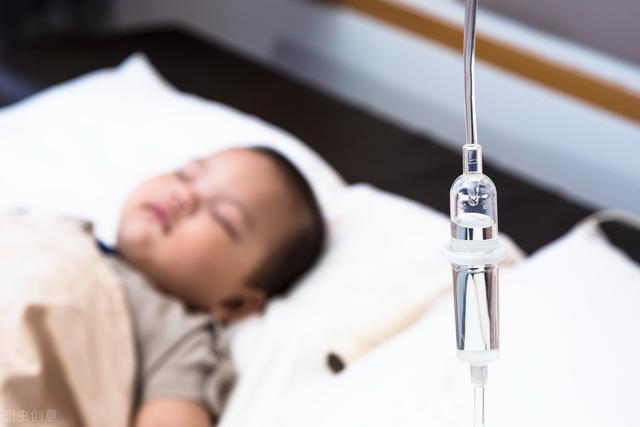
In patients with hypoglycemic coma, intravenous glucose solutions are required to rapidly correct the hypoglycemia, otherwise functional encephalopathy and even death may occur.
Some emergencies such as diabetic ketoacidosis require a glucose fluid infusion
Wait, aren't patients with diabetic ketoacidosis very high in blood sugar? How come they need a glucose infusion too?
The use of glucose fluids is very important and necessary in the use of ketoacidosis. This is because diabetics consume fats and proteins in the body, as the glucose in the body cannot be utilized due to high blood sugar.
The intermediate products of the breakdown of fats and proteins are the ketone bodies: acetoacetic acid, hydroxybutyric acid, and acetone, which provide energy to the body when glucose cannot be utilized. However, these acids in the body can lead to a state of acidosis.

In diabetic ketoacidosis, the patient may experience nausea, vomiting and even coma. Therefore these acids need to be eliminated as soon as possible.
The best anti-ketogenic substance is glucose.
In the case of relatively high blood glucose, rapid and massive rehydration using saline is performed, along with a continuous drip of insulin in small doses to bring the blood glucose down slowly and steadily.
Blood glucose should be constantly monitored during rehydration and insulin administration, and when blood glucose falls to 13.9 mmol/ L, glucose water or glucose-saline drip should be started until feeding improves and ketone bodies disappear.
Patients with chronic diabetic complications also need glucose drip therapy
Diabetes mellitus is very easily combined with damage to the heart and kidneys, and when the patient is in a state of heart failure and renal failure, supplementation with too much saline will increase the burden on the heart and kidneys, making the disease an intractable state that is not easily corrected.
In such patients, salt intake needs to be restricted, and of course the amount of salt in fluids is also restricted. A daily salt intake of 1-3 g is a very small amount, and a 500 ml bottle of saline contains 4.5 g of salt, so it is important to limit the amount of salty fluids.
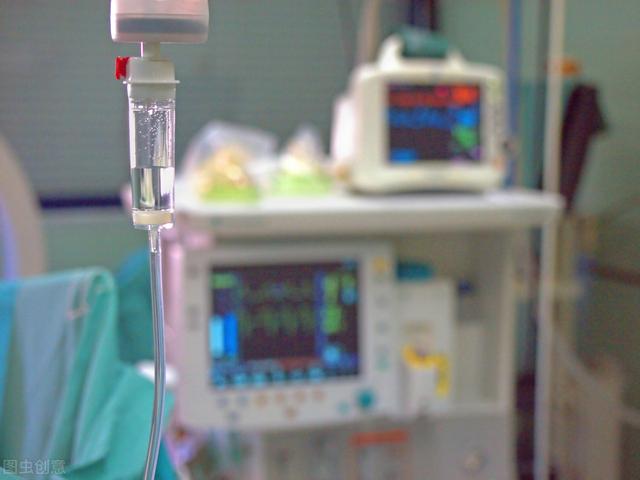
Such patients need medication, the drug into the body there is a need to dissolve, of course, the choice of liquid is a low concentration of glucose water, such as 5% dextrose solution is the first choice.
Patients who cannot eat, are extremely depleted, and are in a fasting state must be placed on a glucose drip
The human body needs at least 120g of glucose as a basic energy-supplying substance. Our daily staple food is starch, which is a polysaccharide, and fruits contain fructose, which are broken down into glucose for the body's use under the action of the body's digestive enzymes.
So patients who can't eat need glucose solutions, and of course diabetes, which requires intravenous input, and of course the gastric tube is a conduit for carbohydrate intake.
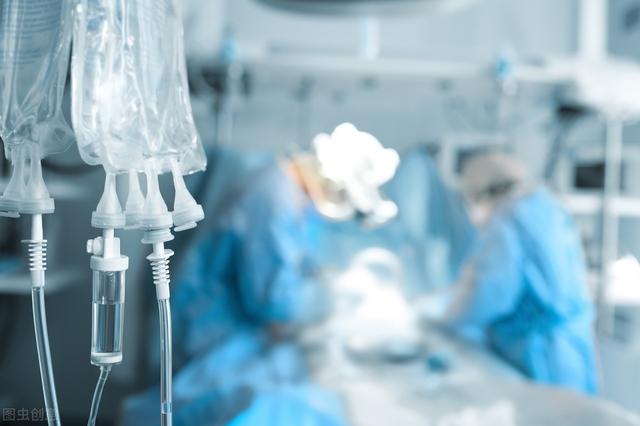
Glucose is an important part of the drug's formula
Glucose can be combined with other drugs to form a special formula to meet some disease-specific needs. For example, the polarizing solution often used in clinical practice is composed of insulin, glucose and potassium chloride.
Insulin in polarized fluids can be a decrease in potassium ions, fatty acids, and amino acids in the blood.
Ischemic injury in the myocardial cells of potassium escape, myocardial energy shortage, polarized fluid can provide glucose, potassium chloride, provide insulin can be extracellular potassium transfer back to the myocardial cells, thus improving the metabolism of ischemic myocardium.

Insulin promotes glucose accounting into cardiomyocytes and inhibits the release of fatty acids from adipose tissue, thereby reducing the accumulation of neutral fatty ground in ischemic myocardium.
Insulin significantly increases myocardial protein synthesis, stabilizes the cell membrane, corrects intracellular potassium deficiency, protects ischemic myocardium, improves sinusoidal and atrioventricular transmission, and prevents arrhythmias.
Polarizing fluids are used clinically for a variety of heart diseases including chronic stable coronary artery disease, acute myocardial infarction, and cardiomyopathy.
How can a diabetic use glucose solution to heal without raising blood sugar?
It is true that a diabetic's blood sugar will rise if he or she is simply given a glucose infusion, but as an experienced diabetes treatment physician, it is up to you to try to keep your blood sugar as steady as possible while treating the disease.
A certain amount of insulin needs to be added to counteract the glucose in the glucose solution, without raising blood sugar, and even acting to lower it.

This maneuver requires the clinician to be clinically experienced in ensuring fluid intake and also not elevating blood glucose. It is usually based on the patient's blood glucose and requires 2-4 g of sugar with 1 u of insulin. It basically keeps the blood glucose constant.
In the process of clinical infusion, it is often encountered that this drug can not be paired with insulin, that is, insulin and this drug can not be placed in an infusion vial of intravenous drip, because this may appear discoloration, precipitation, the drug's efficacy decreased, and even the emergence of serious adverse drug reactions.
In this case, we have to choose another fluid all the way around and add insulin IV to counteract the blood glucose in the other fluid, or choose an insulin pump or micropump to continuously pump insulin therapy.

Therefore, if you need glucose sedation or if you have heart or kidney problems when you are sedating fluids, it is still recommended to go to a proper medical institution or specialty. In a private clinic or health center, etc., it is expected that they will not give you the use of glucose, too much salt will aggravate the condition, the use of glucose, not to carry out the treatment of the liquid, then the blood glucose may be elevated more significantly.
To summarize:
Glucose is an important drug in the treatment of the disease and has a very important role in various acute and chronic complications of diabetes such as diabetic ketoacidosis, hypoglycemic coma, diabetes mellitus combined with cardiac and renal failure. It can be used as a solvent, a source of energy for fasting patients and so on.
The diabetic patients are given a glucose drip, which is based on the blood glucose, so that the glucose solution can treat the disease without raising the blood glucose.
Diabetics may use glucose during the course of their disease, and it is important to follow your doctor's instructions, use it correctly, and talk to your doctor if you have any questions.
Glucose infusion for diabetic patients is very common in clinical work, there is no need to make a fuss, this is not a doctor's medication error, but rather a rational use of the disease according to the needs of the condition. People may just notice the glucose and not pay attention to the fact that insulin is usually added to this bottle of glucose to counteract the glucose's blood sugar-raising effect. Diabetes is an endocrine disease, but also a consumptive disease, if the usual blood glucose level is not well controlled, there will be a variety of complications in the cardiovascular, cerebral vascular, nervous system, eye, so there are a large number of diabetic patients will be very complex, often accompanied by cardiovascular, cerebral and renal function damage or insufficiency. The following examples show that it is sometimes reasonable to use glucose in diabetics. Diabetes mellitus with cardiac insufficiency is common in the cardiology department, due to the decline in the heart pumping function, so that the kidneys are not enough perfusion, resulting in sodium retention leading to edema, and even lead to hydrothorax, ascites, pericardial effusion, and other complications, the treatment of such patients is based on diuresis to reduce edema and then limit the intake of salt, such a condition, if the transfusion of fluids, and then the overuse of sodium chloride injection will further aggravate the sodium overload, which is detrimental to the patient's health. aggravate the sodium overload, which is not conducive to the improvement of cardiac function, which requires the appropriate use of glucose + insulin + potassium chloride (commonly used clinical polarizing fluid) while controlling the blood glucose level, in order to facilitate the recovery of cardiac function and improve the condition. In addition diabetes mellitus with renal insufficiency, a dangerous event on hyperkalemia, in the dialysis of potassium at the same time, can use glucose + insulin to promote the transfer of potassium ions and calcium gluconate injection, in order to reduce the negative cardiac effects caused by hyperkalemia. And if diabetic patients if glucose-lowering drug medication use is unreasonable, or eat too little and hypoglycemic reaction, the fastest solution is intravenous push glucose injection to prevent hypoglycemic coma. So diabetics are not unable to use glucose injection, this is your primary care physician according to the needs of the condition of the rational use of drugs. Leave the professional problem, to the professional, is the best choice. Thanks for reading, please correct me if I am not enough.
1 Diabetics can be hypoglycemic, too, so of course you can get a glucose infusion.
As it happens, I just resuscitated an unconscious patient with a past history of diabetes. Checked blood sugar but only 1.8mmol/L (normal human blood sugar level 3.9 to 6.1mmol/L, coma occurs when blood sugar is too low.) This patient was given intravenous high concentration glucose (usually 50% glucose) and was awake in no time. So can a diabetic patient have a glucose infusion? The obvious answer is yes.
2 Glucose is an essential source of energy, and diabetics with normal blood glucose may also require glucose infusions.
Why diabetic patients experience hypoglycemia we will not discuss here. It is understandable that glucose has to be infused when blood sugar is low. But I'll go further: glucose infusion is still OK for diabetic patients even if their blood glucose is in the normal range, and it will be used that way often.
For example, if a patient cannot eat for some reason, or is not eating enough and needs to replenish energy, glucose will be used. Then, for example, if the patient has serious heart failure, kidney failure and other problems, and has to strictly limit the intake of sodium chloride, or if certain drugs have to be diluted with glucose and sodium chloride cannot be used, then glucose may be used. Doctors will dispense a certain percentage of insulin with glucose to help patients promote glucose metabolism and maintain blood sugar at normal levels.
3 A short-term glucose infusion causing a rise in blood glucose within a certain range is not dangerous; hypoglycemia is far more frightening than hyperglycemia.
The scary thing about diabetes is that years of high blood sugar slowly eats away at the blood vessels, causing atherosclerosis, blockages, narrowing, and other problems. And short-term elevation of blood glucose, within a certain range, is not at all dangerous to the human body, and the person will not feel any discomfort (unless the blood glucose is extremely high, causing hyperosmolar coma or ketoacidosis). Infusion of a bottle of glucose, only equivalent to the patient ate an extra piece of sugar, or eat a few more mouthfuls of rice, the diabetes condition does not have a substantial impact. So diabetics do not have to be scared of sugar.
In the clinic there are many diabetic patients are puzzled, why is it that the doctor wants me to have glucose infusion when I am obviously already suffering from diabetes and my blood glucose is higher than that of an ordinary person? Isn't this increasing the concentration of glucose even more? Is this a cure or a harm?
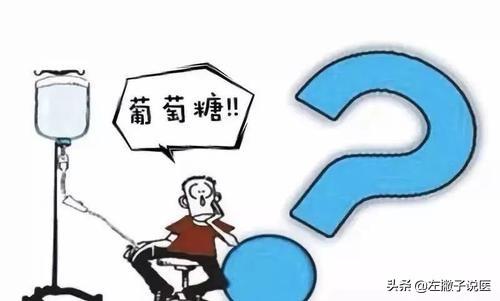
We all know that people with diabetes have abnormally high glucose levels in the blood because the glucose in the blood cannot be effectively broken down and metabolized. It is for this reason that you need to control your blood glucose in your daily life, so that the blood glucose level is controlled in the normal range. In particular, it is important to limit the intake of sugary foods or carbohydrates to avoid excessive glucose production.
However, as mentioned in this question, the patient is obviously suffering from diabetes and needs to control the glucose level in the blood, which is conducive to the control of the disease. Now the doctor is asking the patient to infuse glucose solution instead, which is undoubtedly adding fuel to the fire and aggravating the level of glucose in the blood. Is it possible that the doctor does not know such a simple and obvious reasoning?
In fact, it is not at all surprising that patients have such doubts, and I will analyze them below, and after reading my analysis, I may be able to solve your doubts
First of all, if you need infusion in the clinic, you generally need to use saline or dextrose to dissolve the drug before infusion, this is the same whether it is ordinary patients or diabetic patients. Some drugs can be dissolved in glucose solution or in saline, but others can only be dissolved in saline or in glucose solution.
Secondly, if the diabetic patient has some complications, such as the kidneys have developed serious lesions, they cannot metabolize the sodium in the body properly, which will easily cause hypernatremia. At this time, if the patient needs to be treated by infusion, then saline can not be used as a solvent to dissolve the drug, it can only use a low concentration of glucose water. Let's think about it, for people with hypernatremia, the daily salt intake should be 1~3g, but if a bottle of 500 ml of saline is entered, then the salt content in this bottle of saline can be up to 4.5g, then this will undoubtedly make the salt in the blood even higher. Therefore, patients at this time must control the restriction of sodium salt intake to avoid further increase in sodium in the body, so as not to aggravate the burden on the kidneys and cause irreversible lesions. Therefore, it is more appropriate to choose low concentration glucose water solution than raw saline at this time.
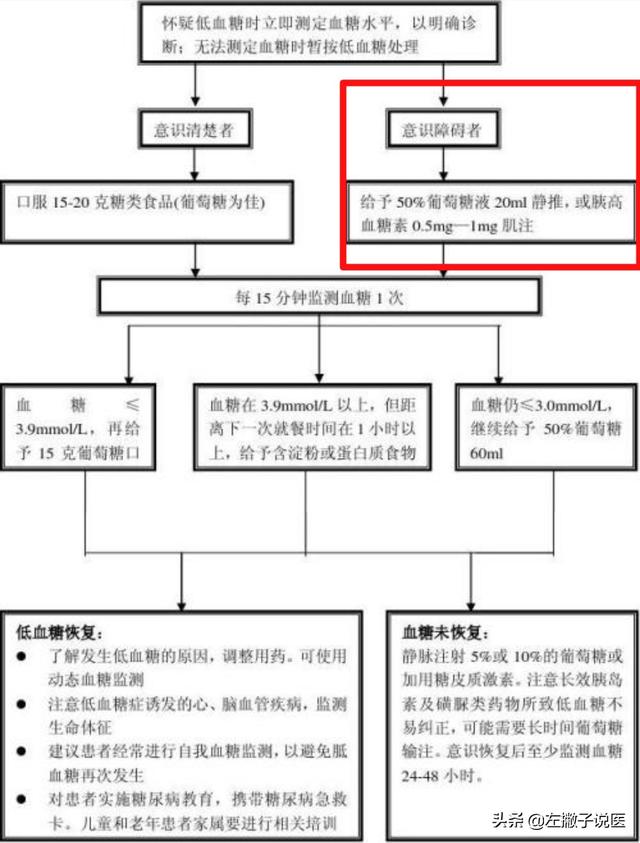
Once again, a diabetic patient with hypoglycemic coma will need a glucose infusion. For diabetic patients we can not only see patients with elevated glucose, we should also be more concerned about is that diabetic patients in ordinary life is prone to hypoglycemic complications, and this hypoglycemic complications sometimes even cause life-threatening, so you need to supplement glucose in a timely manner to improve the symptoms of hypoglycemia. And hypoglycemic diabetic patients at this time need to infuse glucose solution in order to rapidly improve the symptoms of hypoglycemia, faster than oral glucose. Especially for some patients who are already in hypoglycemic coma, if the hypoglycemia can not be improved quickly, then it may cause functional encephalopathy, and even death may occur. This is why intravenous glucose infusion is needed at this time to correct hypoglycemia quickly.
● Finally, glucose is also a source of energy for our body, and this is the same for people with diabetes, even if they are diabetic, they still need to consume a certain amount of glucose in their normal daily life so that they can provide energy to their body. This is the case for some diabetics who cannot eat or are in a fasting state, and if they cannot get energy through their normal diet, then they need to be given an infusion of glucose to provide them with energy.
Of course, we don't need to worry too much about glucose infusion, because doctors have already thought about this aspect of the problem, and they often add a certain amount of insulin into the glucose infusion for diabetic patients, so as to prevent the patients' blood sugar from rising abnormally. The ratio of glucose to insulin is generally about 5:1, that is, if the patient needs to infuse a 500mL bottle of 5% glucose injection, then the patient needs to add 5U of insulin to it, which can prevent the diabetic patient's blood glucose from rising abnormally during the glucose infusion.
Overall, when we visit the hospital, we as patients must trust the doctors, who have considered every medication, just like this issue, there is a reason why doctors give glucose infusion to diabetic patients, which is in line with the purpose of the treatment, and it is not just a haphazard thing to do.

Author's note: I'm very happy to popularize health-related knowledge for everyone, I'm left-handed to say medical, every day in simple language for you to popularize professional medical knowledge, the code word is not easy, if you like my article, help me to point a praise! If you still have questions, you can leave a message in the comments section, welcome to pay attention to, forward, thank you for your support!
This question and answer are from the site users, does not represent the position of the site, such as infringement, please contact the administrator to delete.